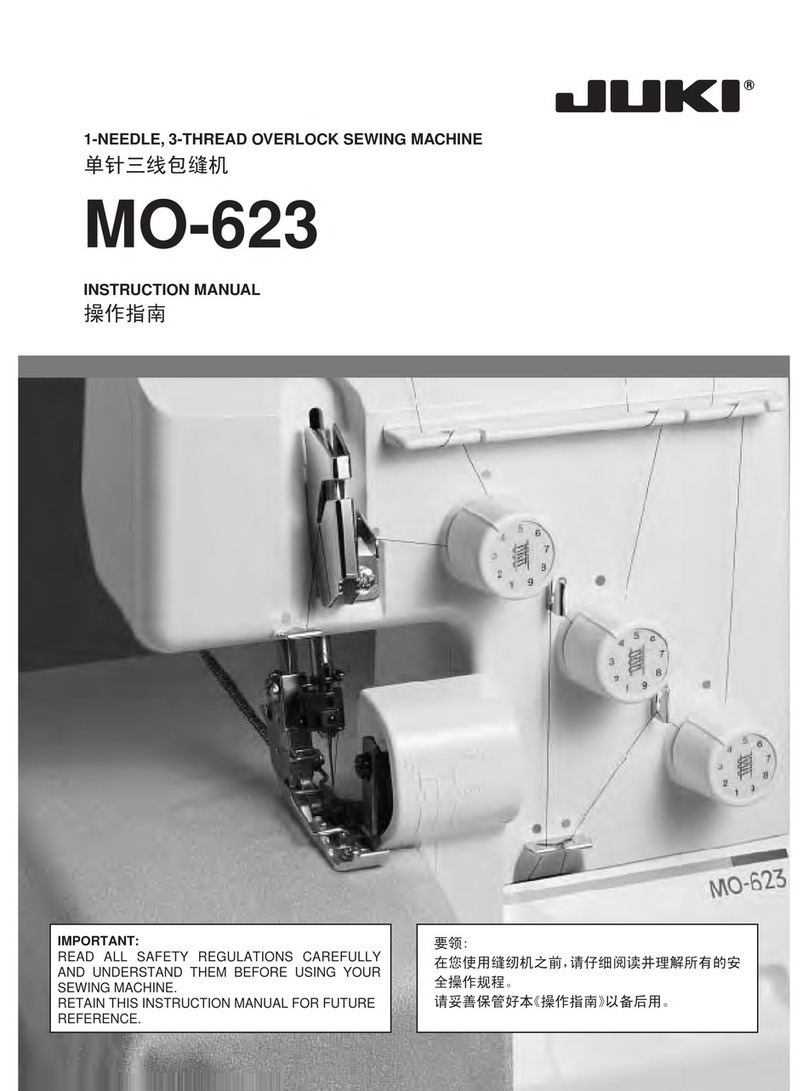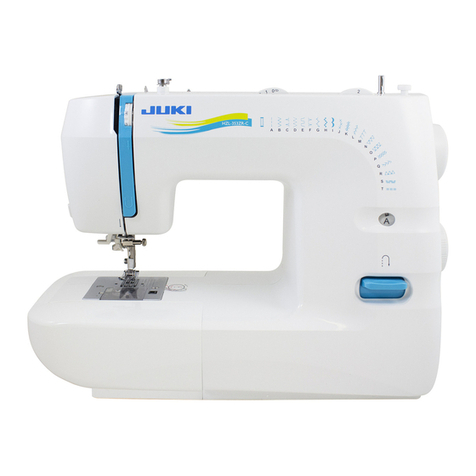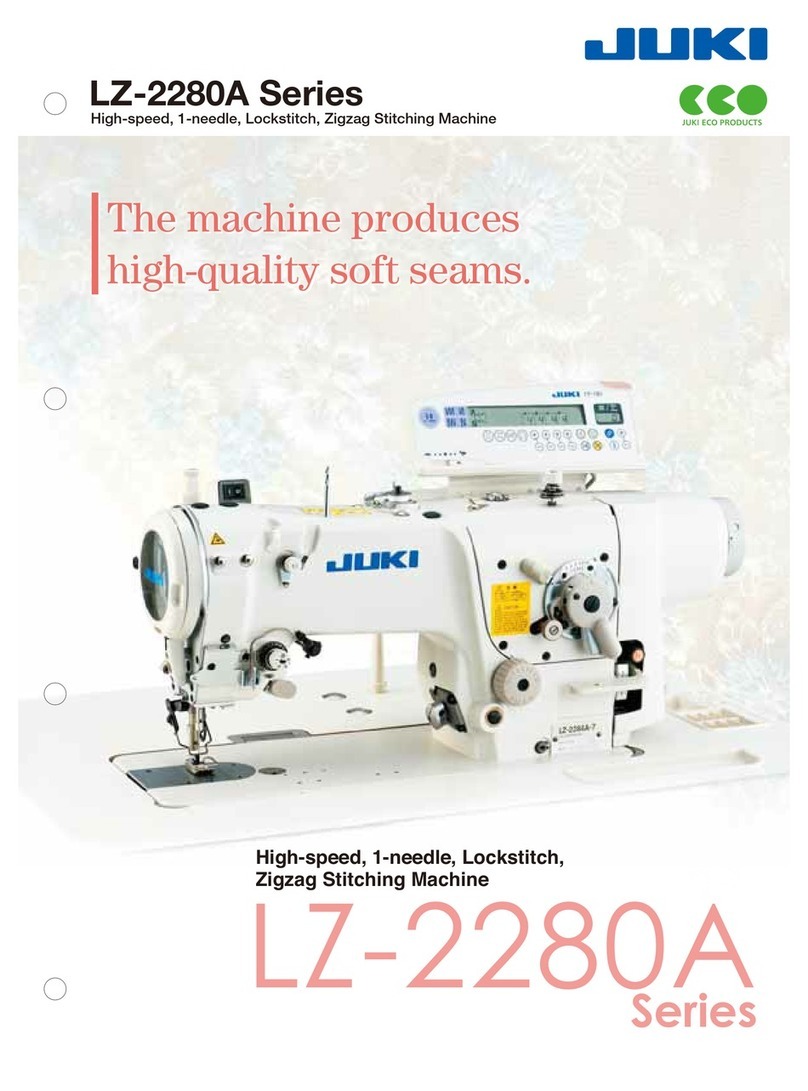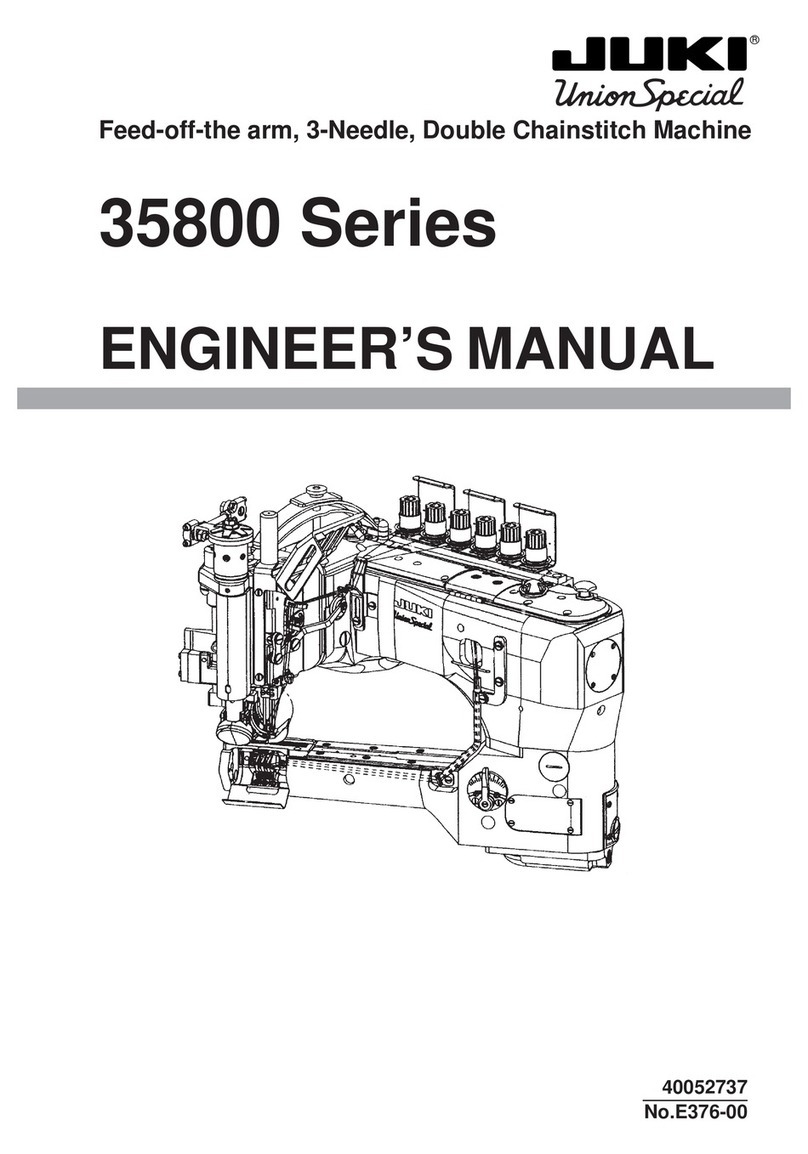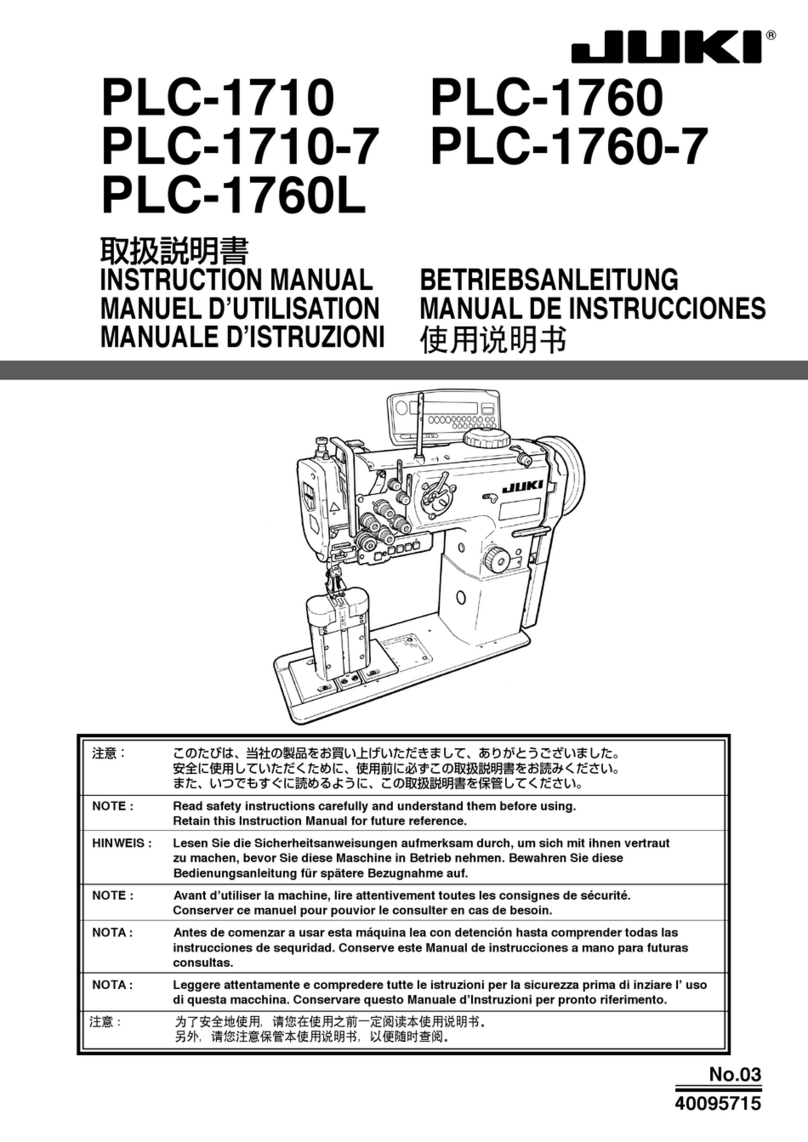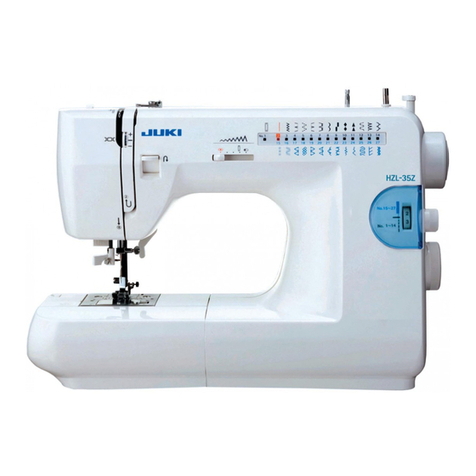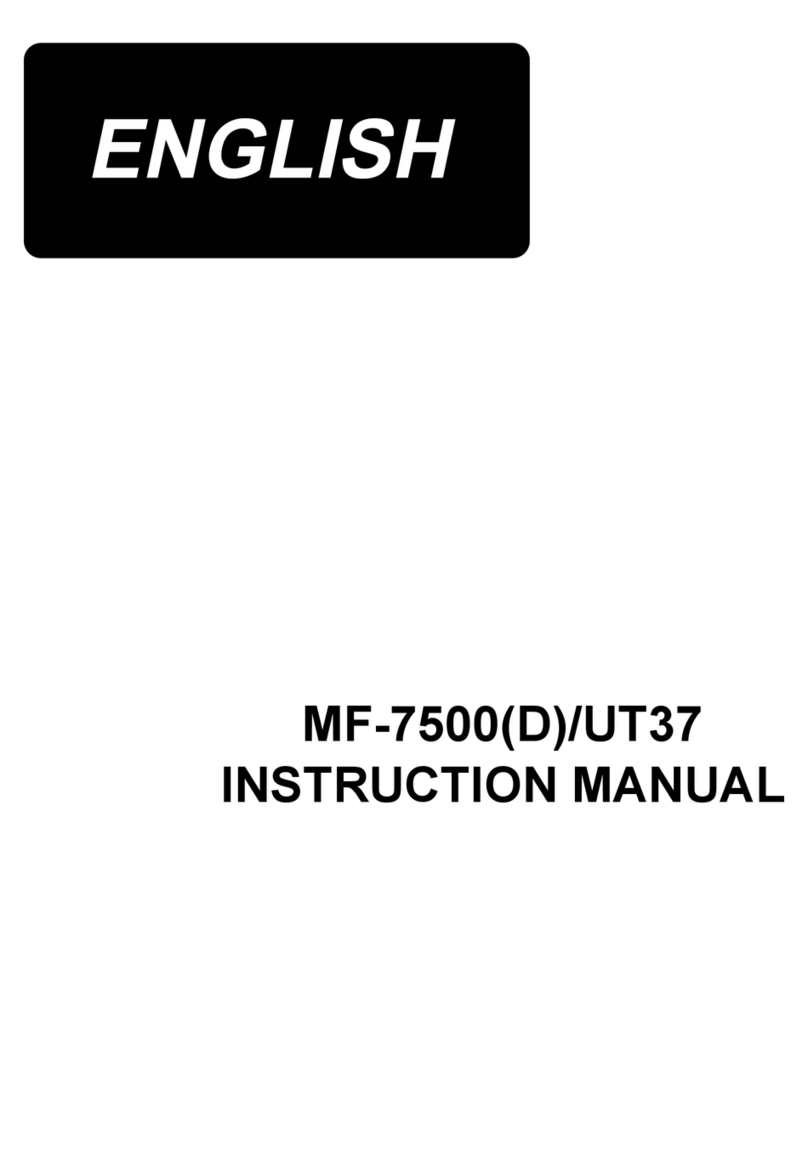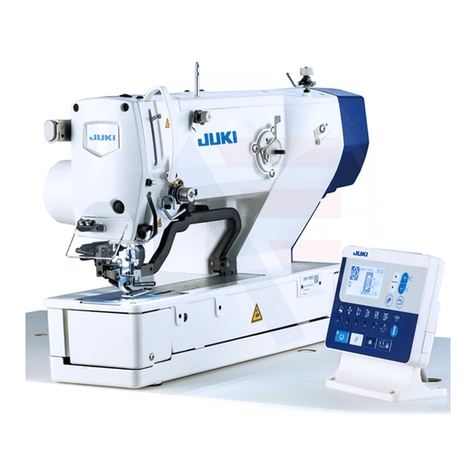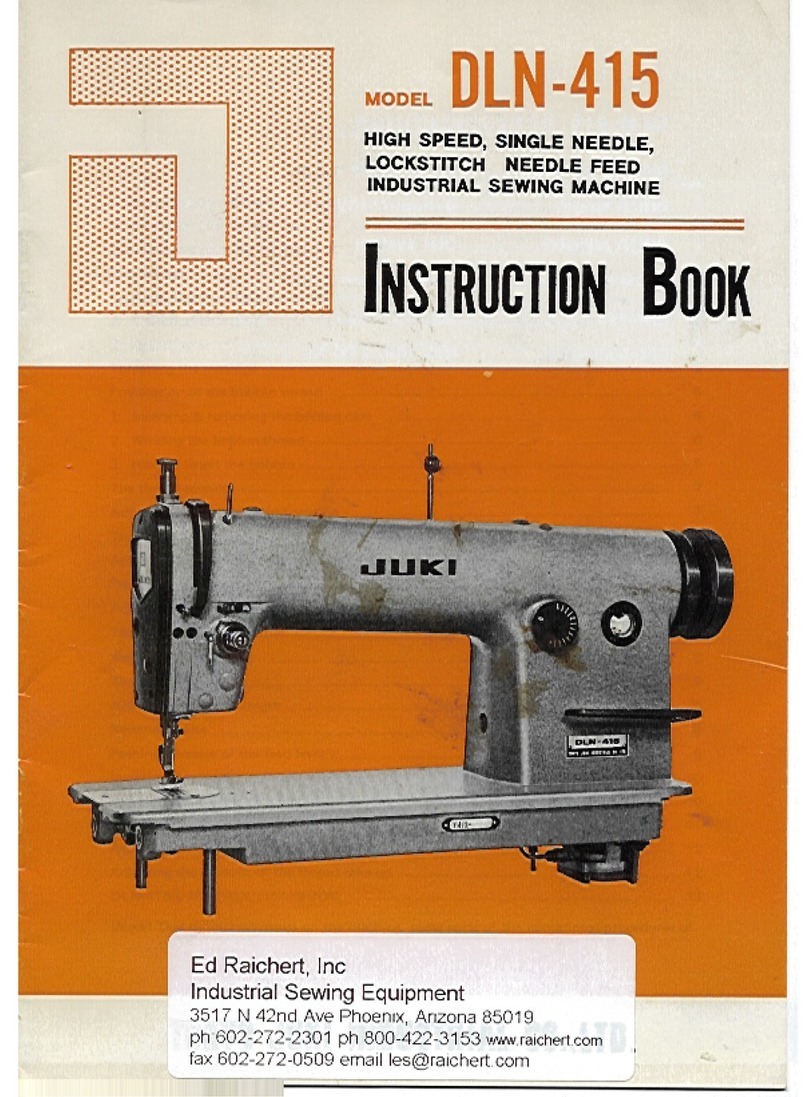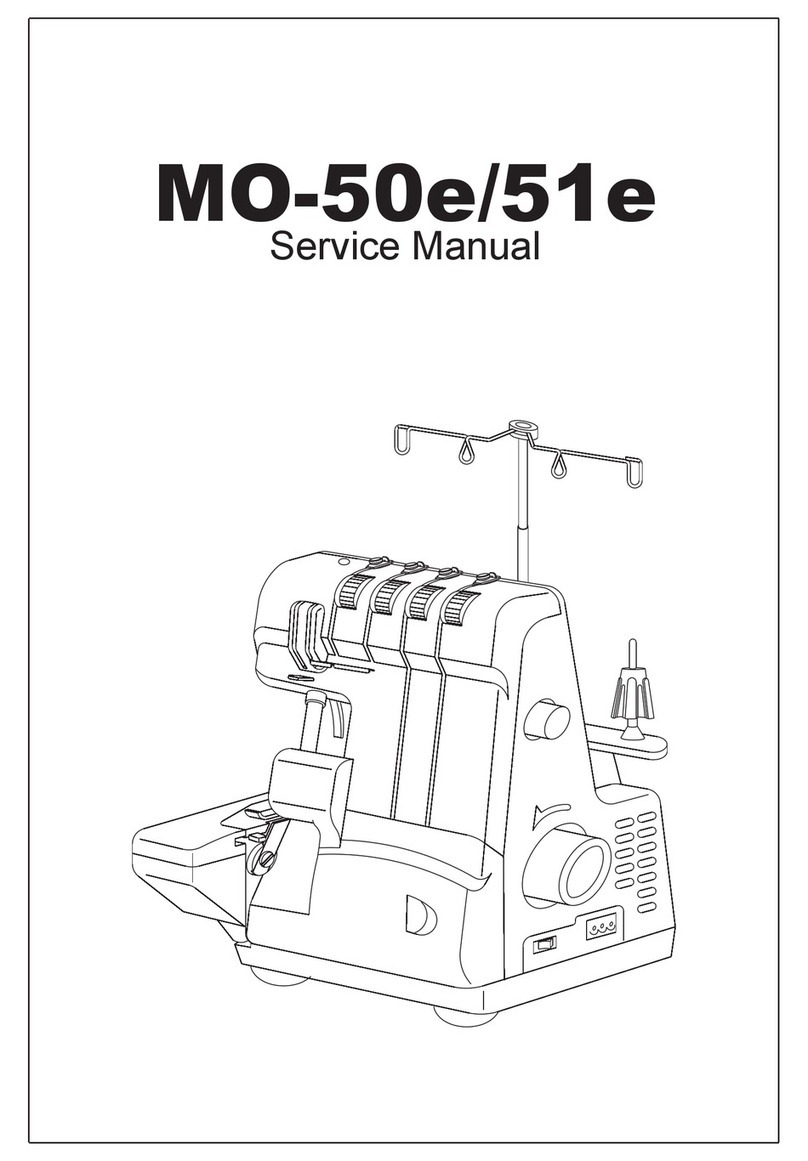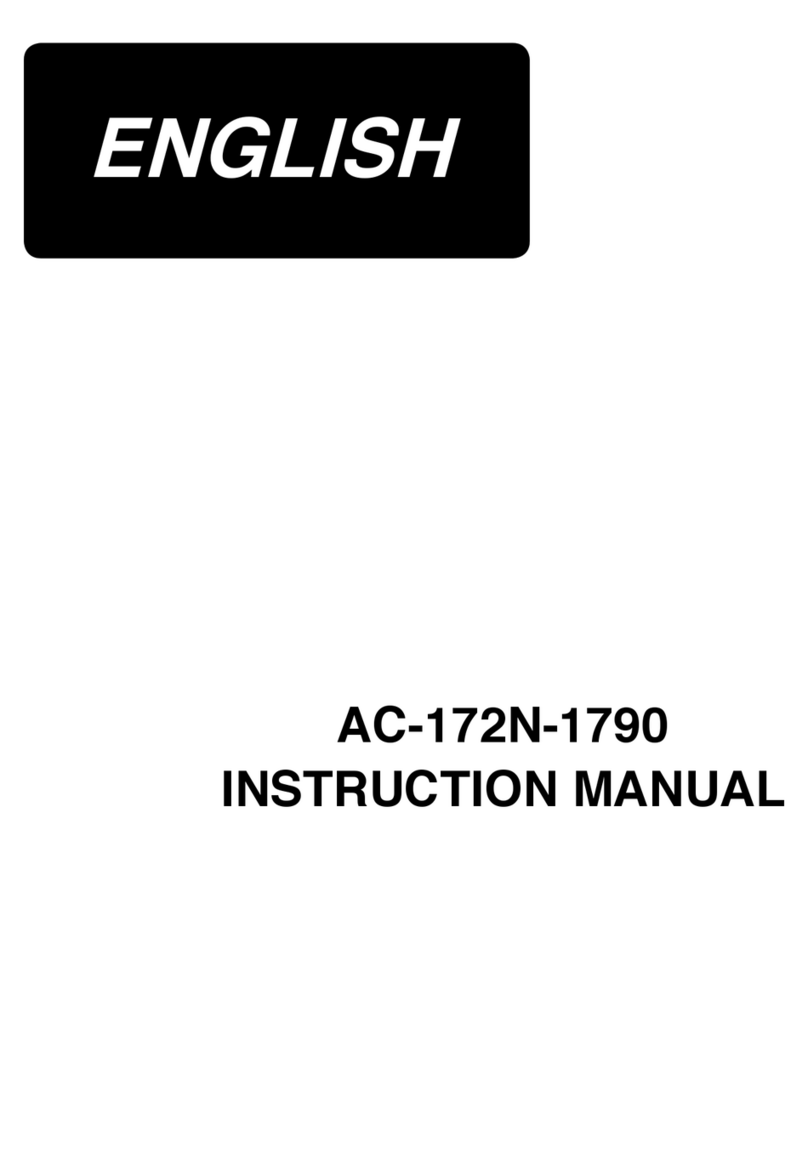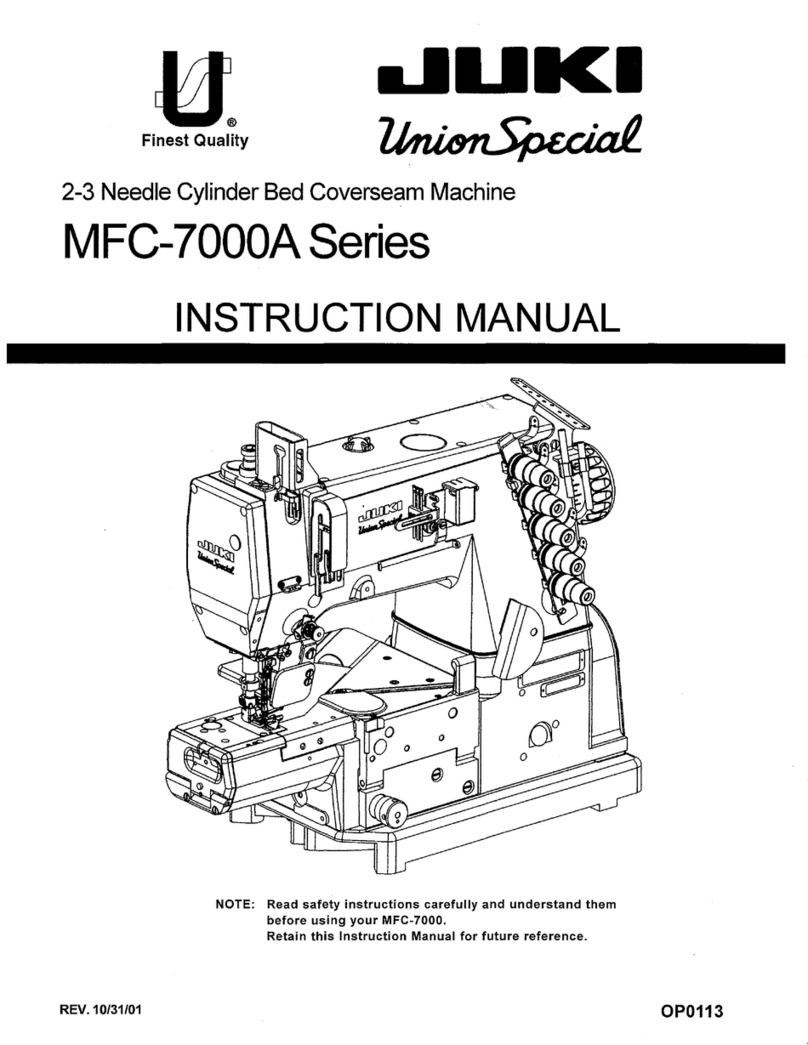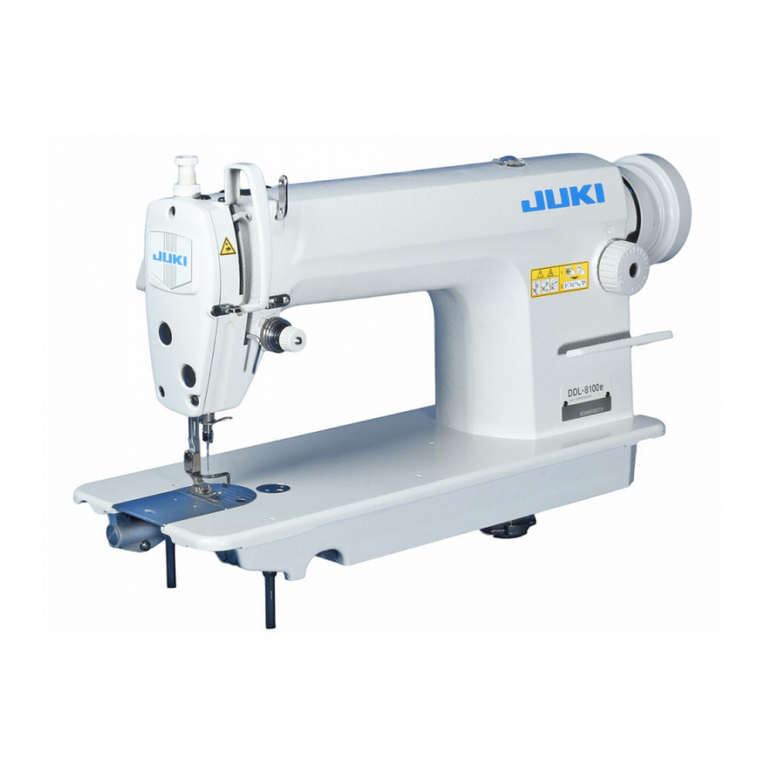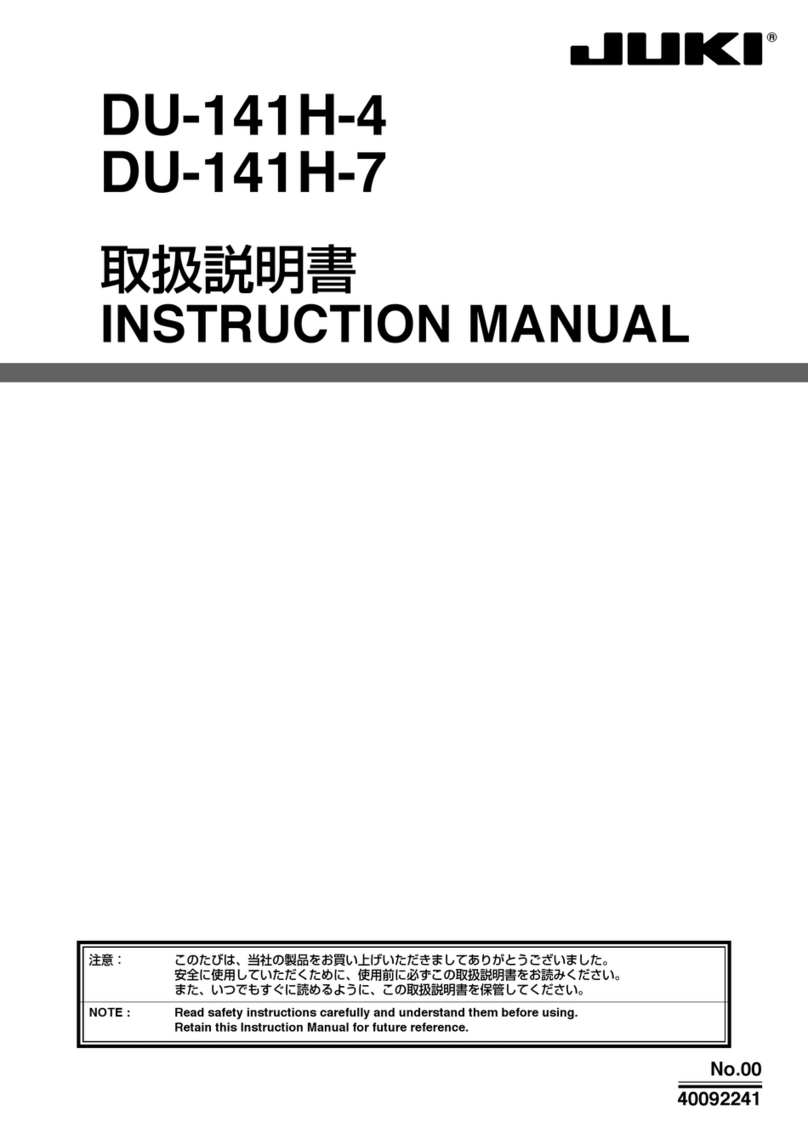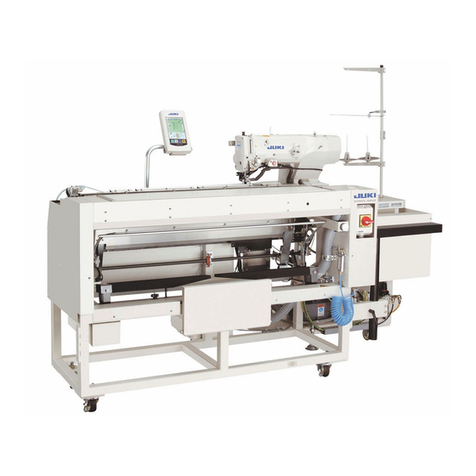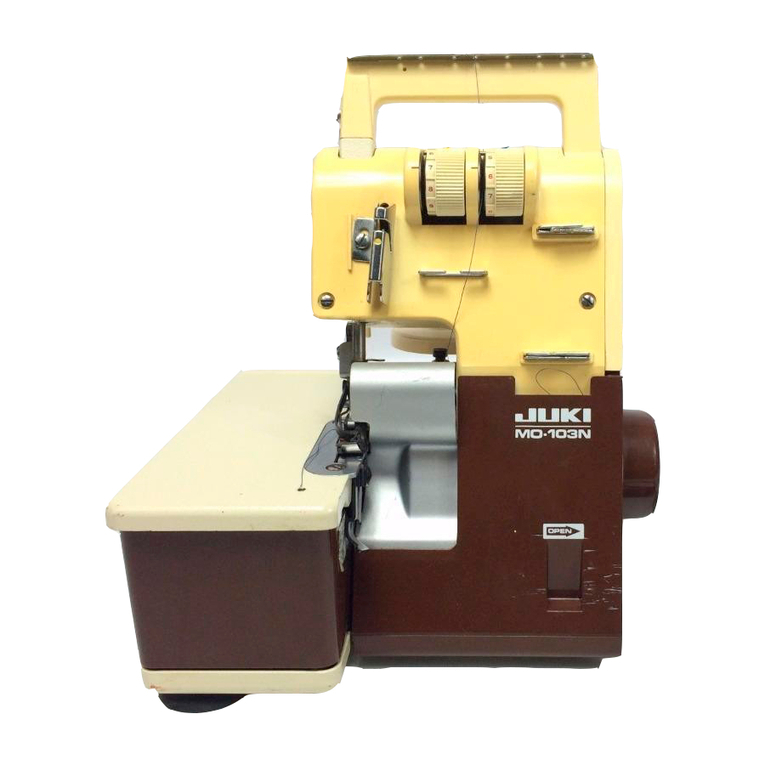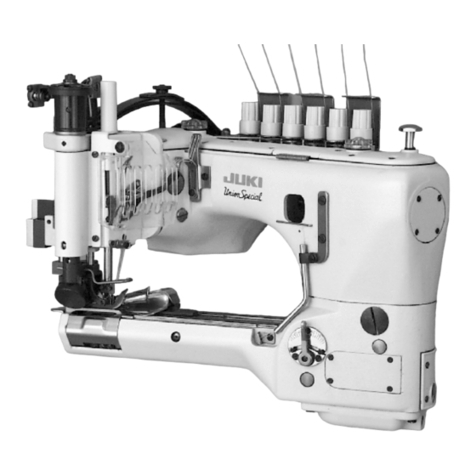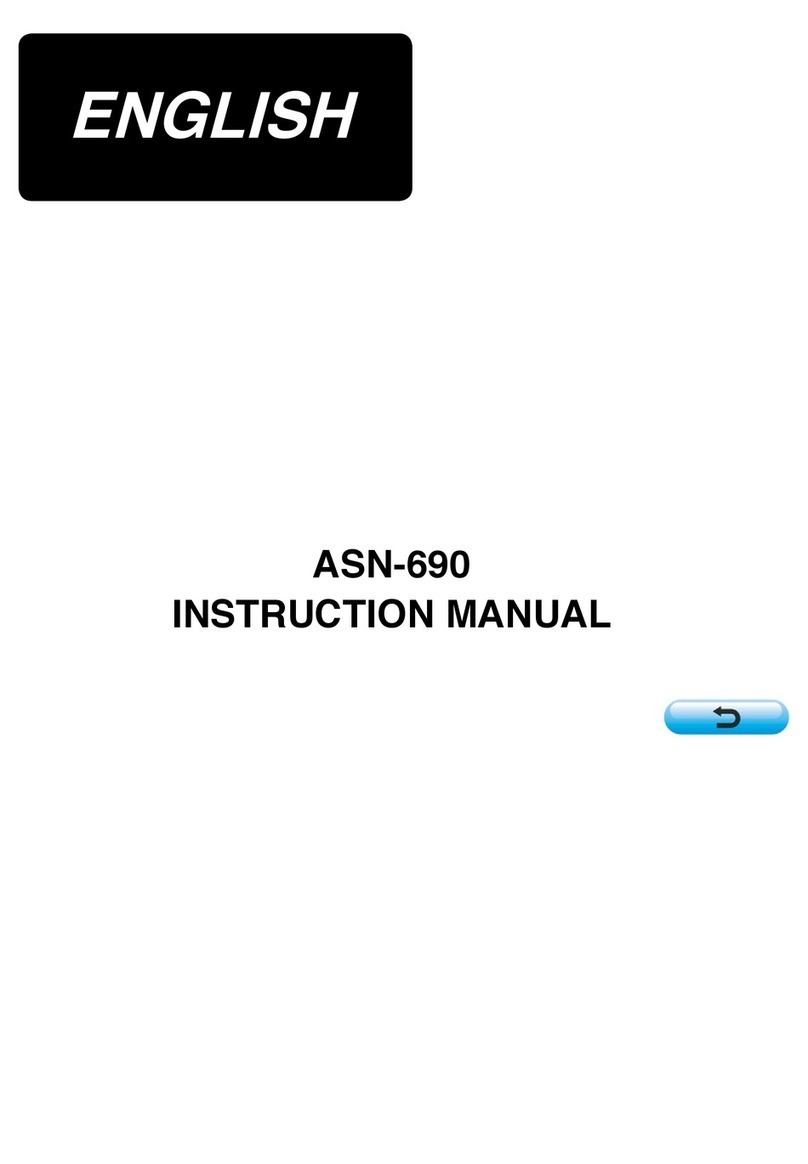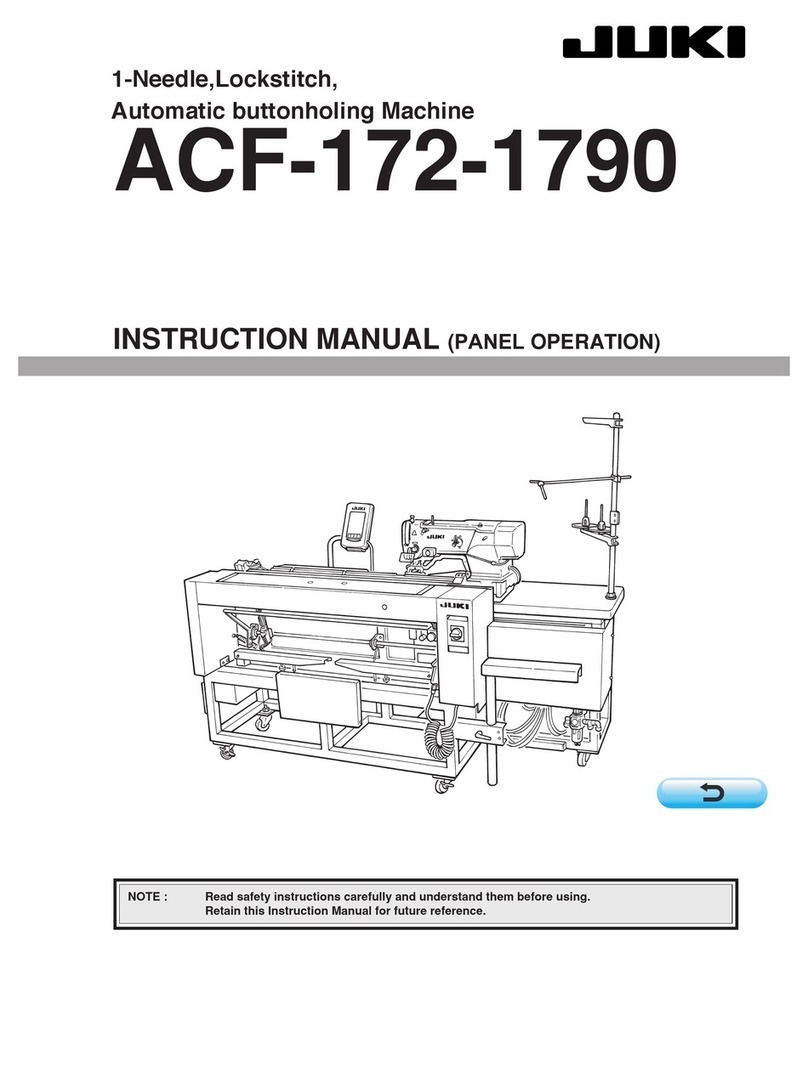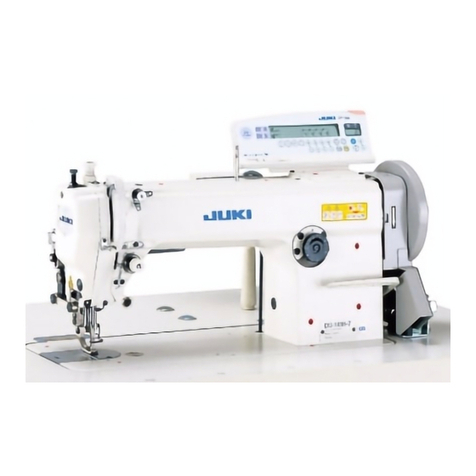
i
CONTENTS
!. SPECIFICATIONS ..................................................................................... 1
@. SET-UP...................................................................................................... 3
1. Installation.................................................................................................................. 3
2. Installing the pedal sensor ....................................................................................... 4
3. Installing the power switch....................................................................................... 4
4. Attaching the connecting rod ................................................................................... 6
5. Winding the bobbin thread ....................................................................................... 7
6. Adjusting the height of the knee lifter ..................................................................... 8
7. Installing the thread stand ........................................................................................ 8
8. Lubrication ................................................................................................................. 9
9. Adjusting the amount of oil (oil splashes) .............................................................. 9
10. Attaching the needle...............................................................................................11
11. Setting the bobbin into the bobbin case ............................................................. 12
12. Adjusting the stitch length.................................................................................... 12
13. Presser foot pressure............................................................................................ 12
14. Hand lifter ............................................................................................................... 12
15. Adjusting the height of the presser bar............................................................... 13
16. Threading the machine head ................................................................................ 13
17. Thread tension ....................................................................................................... 14
18. Thread take-up spring ........................................................................................... 14
19. Adjusting the thread take-up stroke .................................................................... 14
20. Needle-to-hook relationship ................................................................................. 15
21. Height of the feed dog........................................................................................... 15
22. Tilt of the feed dog................................................................................................. 16
23. Adjusting the feed timing...................................................................................... 16
24. Cunter knife............................................................................................................ 17
25. Pedal pressure and pedal stroke ......................................................................... 17
26. Adjustment of the pedal ........................................................................................ 18
#. FOR THE OPERATOR ............................................................................ 19
1. Operating procedure of the sewing machine........................................................ 19
2. Built-in panel of the machine head ........................................................................ 21
3. Operating procedure of the sewing pattern .......................................................... 22
4. One-touch setting .................................................................................................... 24
5. Production support function .................................................................................. 25
6. Setting of functions ................................................................................................. 28
7. Function setting list................................................................................................. 29
8. Detailed explanation of selection of functions ..................................................... 33
9. Automatic compensation of neutral point of the pedal sensor........................... 43
10. Selection of the pedal specications................................................................... 43
